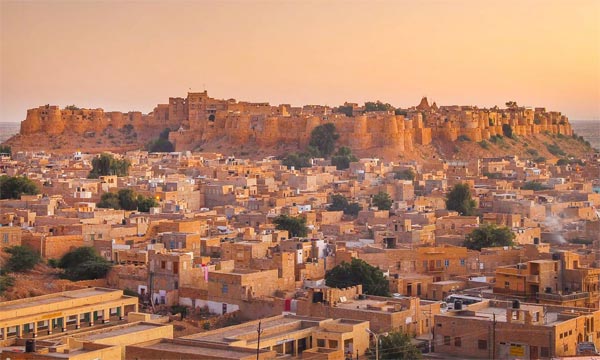Today, you will be transferred to Fatehpur Sikri. Fatehpur Sikri is also popular as the “City of Victory.” It was built during the 16th century by Mughal Emperor Akbar. It served as his capital for 10 years.
The first stop here is the Jama Masjid. It was built by Shah Jahan using red sandstone and marble. It houses tall minarets that have 130 steps inside. From there you can see a panoramic view of the city. It is one of the largest mosques in India. Then, you will arrive at the Tomb of Salim Chisti. It is tomb built for the Sufi saint, Salim Chisti. It is also known as the “Ajmer Sharif.” It is believed that Akbar was blessed with a son because of this famous saint. Hence a tomb was built to honor the saint. Then, you will visit the Panch Mahal. This is a five-story palace that has a wondrous design. It was the retreat palace for Emperor Akbar. The architecture was inspired by a Buddhist temple which makes it unique compared to other palaces in the city. Then, you will be taken to the Buland Darwaza. It is a humongous architecture that fuses Hindu and Persian styles. It remarks a victory archway of Akbar of 1601 battle victory over Gujarat. The Ibadat Khana is the other landmark. It was once the meeting house for the Mughal ruler. It was built in the year of 1575. It is also known as the “House of Worship.” Many religious conversions took place at this court. Then, you will be taken to JodhaBai’s Palace or the Mariam-uz-Zamani’s palace. This palace was built for the first and last love of Emperor Akbar, JodhaBai. She became the Marian-uz-Zamani after she gave birth to their son Jahangir. Then, you will be taken to the NaubatKhana. It is also popular as the “Drum House”. It is a place where several musicians resided. It is located at the entrance of a palace. Then, you will arrive at Birbal’s house. It is one of the nine precious gems of Emperor Akbar. It is near the palace dedicated to his favorite wife. It is known for its secret pathway that leads to the Hathi Pol.
Then, you will be taken to Agra. Agra has a great history associated with the Mughals, Sultans, and British. It is also the place where Urdu literature and Hindi literature started becoming more prominent due to emerging writers and poets.
The first stop at this city is the Taj Mahal. This marble monument is dedicated to Shah Jahan’s wife, Mumtaz Mahal. So, Shah Jahan, left her grave undecorated to express his grief. Even though the palace is known for its spectacular symmetry, the grave of his wife is the only place that is left unsymmetrical. The four minarets of the Taj Mahalare built in such a way that they would collapse away from the palace so that they do not fall on the grave of Mumtaz Mahal. Then, you will be taken to the Agra Fort. This fort was a site of the start of Indian movement of 1857. It has two gates the Delhi Gate and the Lahore Gate, out of white the former is not opened to the public. This fort also severed as an inspiration for construction other buildings due to its excellent architecture. After the journey, you can go shopping across the streets at leisure.Post-journey, overnight at Agra.



















































